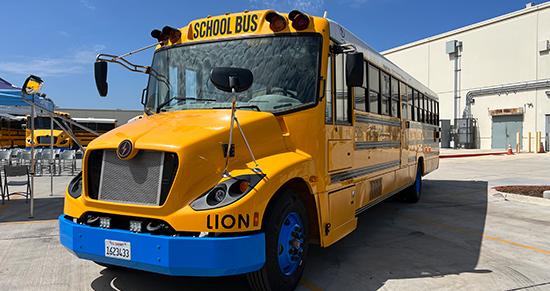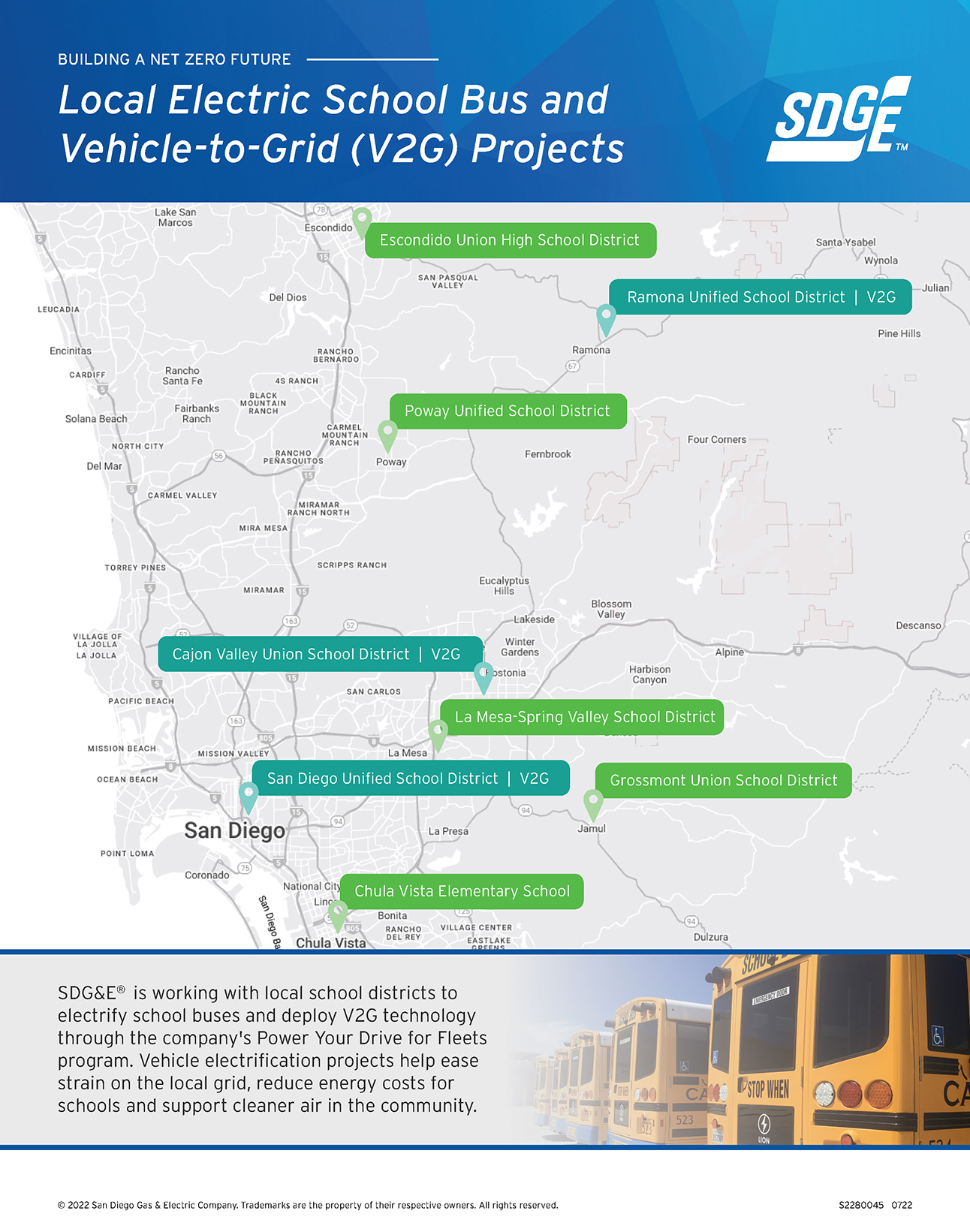Vehicle-to-Grid (V2G)
Did you know that many vehicles, including Electric Vehicles (EVs), are parked up to 95% of their useful lives? Through vehicle-to-grid (V2G) innovation, idle cars transform into mobile batteries that can store energy and supply power to the grid.

The Benefits of V2G
When traditional EVs are parked and plugged in, “smart charging” delivers energy from the grid to their batteries. Now, thanks to emerging V2G technology, EV batteries can discharge energy back to the grid.
V2G technology works by enabling EV batteries to charge during times of low energy demand, such as midday, when solar production peaks and clean energy is abundant on the grid. During times of high energy demand, such as the afternoon and evening, EV batteries return surplus energy to the grid. As a result, V2G technology reduces energy costs for fleet operators, stabilizes the grid during peak hours, enables EV batteries to serve as emergency power sources, and expands innovative technologies that support a net-zero future.
School Buses as Power Sources
School buses demonstrate an excellent use case for V2G technology. Buses hold larger batteries than standard vehicles, they can charge during hours of peak solar energy production, and they can discharge energy when electricity demand is highest.

Current V2G Projects
Through the Power Your Drive for Fleets program, SDG&E collaborates with local school districts to electrify buses and deploy V2G technology. Vehicle electrification projects help ease strain on the local grid, reduce energy costs for schools, and support cleaner air in the community.
V2G Pilot Program at Cajon Valley Union School District
As part of a five-year collaboration between SDG&E, the Cajon Valley Union School District (CVUSD) and Nuvve, eight electric school buses will connect to 60kW bi-directional DC fast chargers. The electric buses will be able to discharge surplus energy to the grid during peak demand hours. They will also reduce energy costs for the district’s schools because electricity is typically cheaper than diesel fuel, and EVs generally have lower maintenance costs than gas-powered vehicles.
Additionally, CVUSD will be one of the first school districts to participate in SDG&E’s Emergency Load Reduction Program (ELRP). When the California Independent System Operator (CAISO) issues a Flex Alert for the state, residents and businesses are asked to voluntarily reduce their energy use during hours of peak energy demand. Through the ELRP, schools can generate revenue of up to $2 per kWh when they return energy to the grid during a Flex Alert.
Learn More about the V2G Pilot
Vehicle-to-Everything (V2X)
Earlier this year, the U.S. Department of Energy (DOE) announced a first-of-its-kind Memorandum of Understanding (MOU) to advance Vehicle-to-Everything (V2X) technologies. The MOU advances collaboration between the DOE, state and local governments, private entities, and utilities such as SDG&E in order to accelerate commercialization and customer adoption of V2X technologies and collect and analyze data to encourage more innovation for energy storage and EVs. SDG&E is a signatory to this MOU.